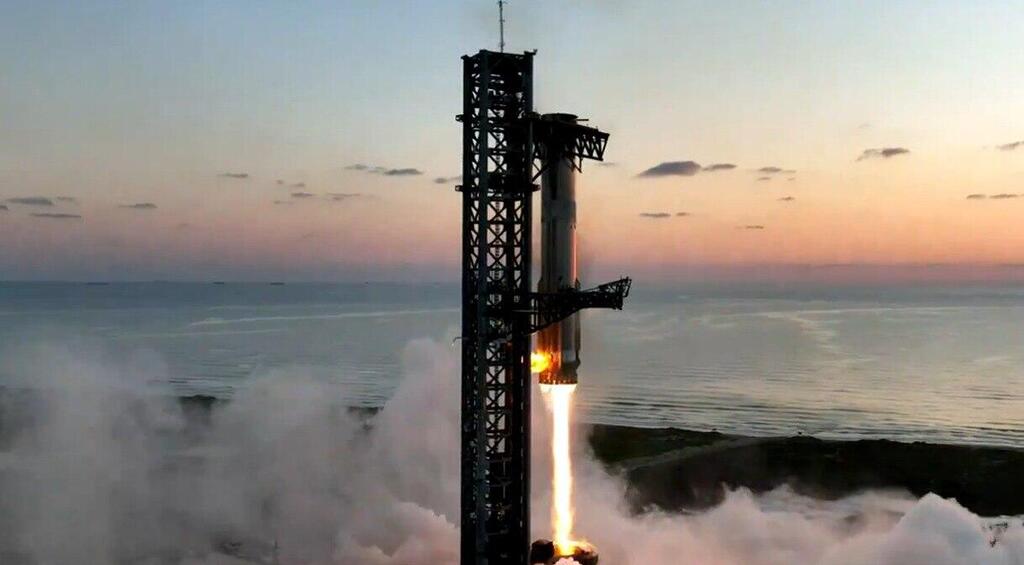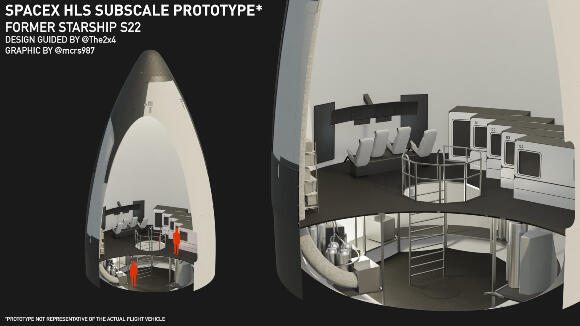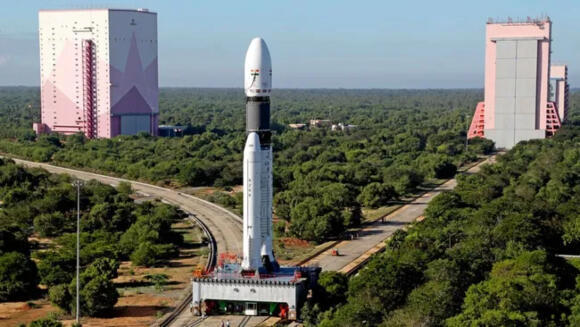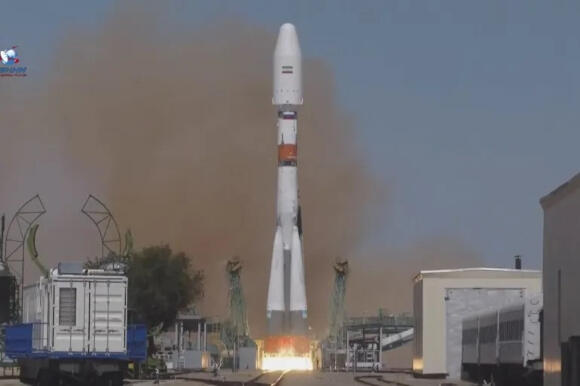Getting your Trinity Audio player ready...
Starship prepares for next test flight
SpaceX has announced plans to conduct the sixth test flight of its Starship system on November 18. This test will again involve capturing the Super Heavy booster with the launch tower’s arms. According to the company’s statement, the goal of this test is to further enhance the performance capabilities of both the booster and the spacecraft, known as the 'Ship,' moving closer to full reusability of the system’s components—achieving soft landings for both the booster and the spacecraft.
During the system’s fifth test approximately a month ago, the booster successfully returned to the launch tower for the first time and was caught by the tower’s arms. The spacecraft continued into space without entering Earth’s orbit, re-entering the atmosphere over the Indian Ocean.
SpaceX's fifth space launch test
(Video: Reuters / SpaceX)
After withstanding the heat of atmospheric re-entry, it performed a controlled descent over water, precisely reaching its designated location before crashing into the sea as planned. The sixth test is expected to follow a similar trajectory, with the primary difference being the re-ignition of one of the spacecraft’s engines in space to prepare for its re-entry maneuver.
This re-ignition is a crucial step for orbital return, which the company will need to perfect in future tests to achieve a soft landing for the spacecraft. Additionally, SpaceX plans to conduct a series of tests on the spacecraft’s heat shield, including repositioning sections of the shield, testing new materials, attempting a steeper re-entry angle and making slight adjustments to the descent maneuver and simulated water landing. For improved visual documentation and performance analysis, the upcoming test's water landing is scheduled to occur during daylight hours
New enhancements to the booster since the last test will also be examined, including increased redundancy in propulsion systems, reinforced structural integrity in critical areas, a shortened fuel drain procedure post-landing, and upgrades to the software and safety parameters of the automated landing system.
The company emphasizes that the booster will only undertake a landing at the launch tower if all safety conditions are met—for both the booster and the launch site—and with final approval from the control team leader. If any safety concerns arise, the booster will be redirected to crash into the sea.
Starship is the largest space launch system ever developed. SpaceX aims for both the booster and the spacecraft to achieve soft landings at the launch site and, after minimal safety checks and preparation, be ready for additional flights.
This reusable system is intended to significantly reduce the costs of space launches for both SpaceX and its customers. Additionally, it will enable the launch of large volumes of cargo, advancing toward SpaceX founder and CEO Elon Musk's ultimate vision of establishing a manned colony on Mars using Starship.
The lunar lander unveiled
Before setting course for Mars, SpaceX's Starship has been selected to serve as the lunar lander for the first crewed missions of NASA’s Artemis program. NASA selected SpaceX's proposal in 2021, awarding it close to three billion dollars for the development of the landing vehicle.
A model of the lander’s upper section, where astronauts will live and work after landing on the Moon, is currently on display at SpaceX’s development center in Boca Chica, Texas. While the overall design has been showcased, specific details, particularly the interior layout, have not been officially released.
Recently, information leaks from instructor Tom Bickmore, who was granted access to tour the model, and 3D designer TheSpaceEngineer have revealed new insights into the lander’s design. However, it’s important to note that these details are based on a model and may not represent the final version.
The lander will be a Starship spacecraft, standing several dozen meters tall, with most of its volume dedicated to engines and fuel tanks. The crewed section, positioned at the top in a rounded conical structure, consists of two levels connected by a ladder through a central opening in the floor and ceiling.
The lower level, featuring a relatively low ceiling, will house storage spaces for equipment, life support systems, temperature control, food, water, and likely restroom facilities for the astronauts. The upper deck, designed with individual compartments arranged around the perimeter, can accommodate up to twenty astronauts—a sizable crew for lunar missions.
This deck will also feature the command and control center—a "cockpit" with seating for four crew members facing touchscreen displays for operation of the spacecraft and its systems. Additional screens around the deck will serve as "virtual windows," providing the crew with information about their external surroundings.
Unlike the lower deck, the curved ceiling of the upper deck will reach approximately 12 meters high, offerig crew members ample space for zero-gravity training during their journey to the moon and preparation for operations in the moon’s low-gravity environment.
Unlike the Apollo spacecraft, where the entire lunar module was depressurized for astronaut exits—requiring repressurization upon return—SpaceX’s lunar lander will feature an airlock. This transition chamber enables multiple astronauts to enter or exit simultaneously. With the living and working quarters situated in the upper part of the spacecraft, the airlock will connect to a specialized elevator that transports astronauts down to the lunar surface and back up.
Although the Artemis program’s first mission, an uncrewed flight of the Orion spacecraft around the Moon, took place approximately two years ago, progress has been relatively slow. The second mission, a flyby of four astronauts around the Moon without landing, is officially scheduled for late 2025, though delays are anticipated. The first crewed lunar landing is planned for the following year, but delays are expected here as well.
The timeline hinges on SpaceX’s progress with Starship, NASA’s advancements with mission components, and, to a significant degree, on the priorities set by the current White House administration, which will determine funding levels for U.S. space programs and resource allocation between government agencies and the private sector."
India delays launch
More than just the U.S. space program is being affected by delays. Last week, the Indian Space Research Organisation (ISRO) announced that its first crewed space mission, initially scheduled for next year, has been postponed to 2026.
Sreedhara Somanath, head of ISRO, explained during a lecture in New Delhi that the delay is due to a cautious approach and the need to thoroughly test all components of the Gaganyaan program. This initiative aims to make India the fourth country to independently launch humans into space, following Russia, the United States, and China.
"There are complex systems in the Gaganyaan program, and we are developing each one of them through a systematic process," said Somanath, "I don't want what happened to the Boeing Starliner, so we should be very careful." Boeing’s Starliner spacecraft experienced malfunctions during its first crewed test flight, which led to NASA withholding permission for the crew’s return from the space station on board the spacecraft.
For its first crewed mission, India plans to launch one or two astronauts into orbit at an altitude of 400 kilometers. An uncrewed test flight of the spacecraft, developed by India, is set for later this year. The spacecraft will carry a humanoid robot named Vyommitra, meaning “space friend” in Sanskrit.
The Indian Space Research Organization (ISRO) intends to conduct at least four uncrewed missions before sending humans into space. ISRO has recently received an additional budget of 11 billion rupees (approximately 1.3 billion dollars) to complete the necessary test flights.
The new Iranian satellites
Last week, Russia launched two Iranian satellites, highlighting the apparent strengthening of political and military ties between the two nations. The Iranian satellites were part of a total payload of 55 satellites aboard the Soyuz 2.1 rocket, launched from the Vostochny Cosmodrome in eastern Russia. The rocket's primary payload included two Russian satellites for solar research and measurement, along with 53 small satellites, including the two Iranian ones.
According to IRNA, Iran’s news agency, the satellites belong to private companies. One, named Kowsar, a 30-kilogram imaging satellite, while the other, named Hodhod, is a compact 4-kilogram communication satellite. Both are expected to remain operational for several years.
Farewell to a veteran telescope: NEOWISE concludes its mission
After nearly 15 years of operation, the American space telescope NEOWISE has concluded its mission, burning up in the atmosphere as planned. Launched in 2009 as WISE—Wide-field Infrared Survey Explorer—the telescope was designed to repeatedly scan the skies in search of distant objects.
It completed its first survey in seven months, but its coolant ran out a few months later, significantly reducing its sensitivity. NASA decided to repurpose WISE to focus on spotting near-Earth asteroids and comets, whose heat signatures it could detect as they approached the sun. Consequently, WISE was renamed NEOWISE, with “NEO” standing for Near Earth Objects.
The repurposed mission proved to be highly successful. Over the years, NEOWISE conducted tens of thousands of observations of approximately 3,000 celestial bodies, including the discovery of 215 asteroids and comets. Additionally, data from the telescope was shared with several “citizen science” projects, inviting public participation in data analysis and processing.
In recent years, NEOWISE, which was placed in a circular orbit at an altitude of about 500 kilometers, began losing altitude due to increased solar activity, as heightened solar emissions increased drag on objects in Earth’s orbit. This past July, NASA deactivated the telescope after it captured its final image, and last weekend, NASA confirmed that the satellite had burned up in the atmosphere.
Though NEOWISE is now gone, its contributions are far from over, as the data it collected will continue to benefit both professional and amateur scientists for years to come. The knowledge gained will also be instrumental in developing the next-generation NEO satellite, planned for launch in 2027.
“We’re taking the lessons we learned from NEOWISE to build a bigger, better, and more capable version of it when it comes to finding asteroids,” said Amy Mainzer, principal investigator of the NEOWISE mission, from the University of Arizona and University of California, Los Angeles.
Get the Ynetnews app on your smartphone:









